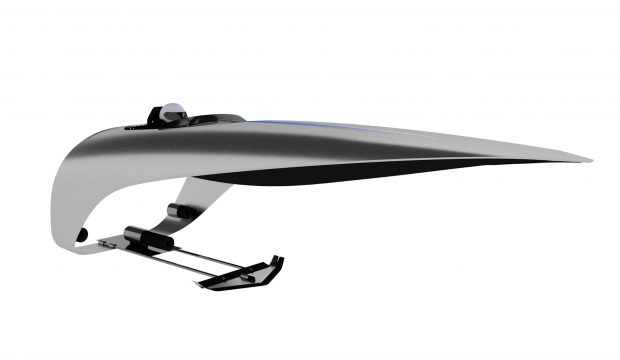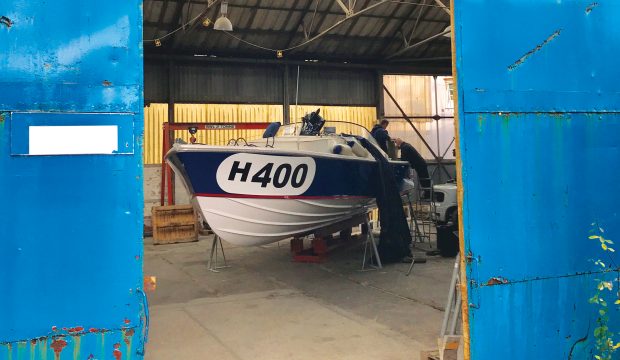A resurgence in interest in offshore racing needs a corresponding increase in sponsorship money
The 53rd running of the annual Cowes International Powerboat Race, better known as the Cowes-Torquay, successfully took place on September 1 but will it be the last occasion this world renowned event takes place?
Much has changed since the first race in 1961 launched modern offshore racing outside the United States. The original course simply took the 30-odd competitors to Torquay until new world championship rules introduced by the UIM in 1968 brought the course back to Cowes. By then however its popularity had swelled racing fleets to more than 60 contenders.
The event was always based in Cowes, in recent years in Cowes Yacht Haven, but times change and so does the source of income. The early years were funded by the Daily Express newspaper, joined later by WD&HO Wills in the form of Embassy cigarettes.
They were followed by several leading British companies but with ever declining media coverage the race no longer attracts the same level of support. The income this year was minimal, so much so that had it not been for the hospitality of the Royal Yacht Squadron offering its private marina for scrutineering there was a strong possibility the race would not have happened.
With only 14 entries, 12 starters and nine finishers, many feel the 2013 event marked the end of an era for British offshore racing. Apart from the lack of financial backing its organisers have had to face countless restrictions, most associated with current nonsensical health and safety regulations.
There has only been one mishap in the Solent during its 53-year history but the fleet can no longer start off the town. What was once the great Cowes-Torquay-Cowes has now deteriorated to a Needles-Torquay-Gurnard contest. While offshore racing has never claimed to be a spectator sport, the public no longer has an opportunity of seeing what was always an outstanding spectacle of a roaring fleet of high-power craft crossing the start line; nor indeed are they able to witness the winner’s moment of glory.
Another problem is organisation. This involves many hours of work contacting and meeting up with various authorities along the route, satisfying the Royal Yachting Association with its countless demands for safety cover and not least, persuading crews to enter.
I find this latter problem hard to understand. Anyone with a racing powerboat owns a worthless item unless it’s used but still they hesitate despite having only one annual opportunity to compete.
Gone are the days organisers could moonlight at their offices working on races. This is almost a full-time job taking several months with little or no reward and few with the ability are willing to give up their time or risk their jobs.
This year’s event saw the involvement of Torquay itself. The town offered added financial incentive for the first leg to terminate in the harour before setting off on the return course to Cowes in the afternoon.
This aspect proved highly successful giving crews an opportunity to collect an additional winning prize, refuel and take refreshment.
It turned out that both outward and return legs were won by the same entry, the 39ft MerCruiser-powered Fountain Going Lean (pictured), driven by Dean Gibbs and Dave Brown. With very calm conditions Gibbs averaged 87.96mph to Torquay and 82.35mph on the return, the fastest speeds since 2008. But what of the future?
There could be a light on the horizon. June next year will see the start of the London to Monte Carlo race for the Venture Cup and while some powerboating pundits have doubts on its success I feel certain it will happen purely because it is being run professionally. Promoter Aidan Foley joined the original group organising the London to Monte Carlo race and carried on after Mike Lloyd announced its cancellation.
If a successful Venture Cup attracts a strong fleet the same group may be encouraged to take on Britain’s oldest offshore race.
The cost of the London to Monte Carlo race will be significant. Aidan also needs to earn a living. Therefore financial sponsorship will be vital but does the current group of race officials understand their responsibility when relying on commercial backing? Recent experience tells me they do not.
I suffered huge frustration as press officer of the 2008 Round Britain Race. In fact the co-operation I received from the race secretariat at Falmouth at the end of the first leg was so lacking I almost gave up and returned to London. I was refused any information and only allowed the results long after the competitors were given their own copies.
Instead of financial sponsorship, Tesco, which sold fuel to the race, paid for the help of their London-based PR agency. It had been agreed that I would provide them with a press release immediately after racing each day which in turn they would circulate to media via their database.
However as powerboat racing is a minority sport it’s vital such information is offered as early as possible and not over two hours after the finish as was the case on some occasions.
The end result was that the event received virtually no coverage which didn’t please Italian company Fiat which had invested €75,000 euros. Such was its frustration that by the time the marathon reached the west coast of Scotland the company began hinting that it wanted its money back.
The entire Venture Cup and organisers’ plans for future marathon races will depend entirely on commercial backing in all its forms. This in turn will depend on the level of brand awareness it receives in general media and not just preaching to the converted online. Let’s hope someone takes the initiative.
Photo: Dave Ormiston
Subscribe to the print version of MBY
Subscribe to a digital version of MBY











